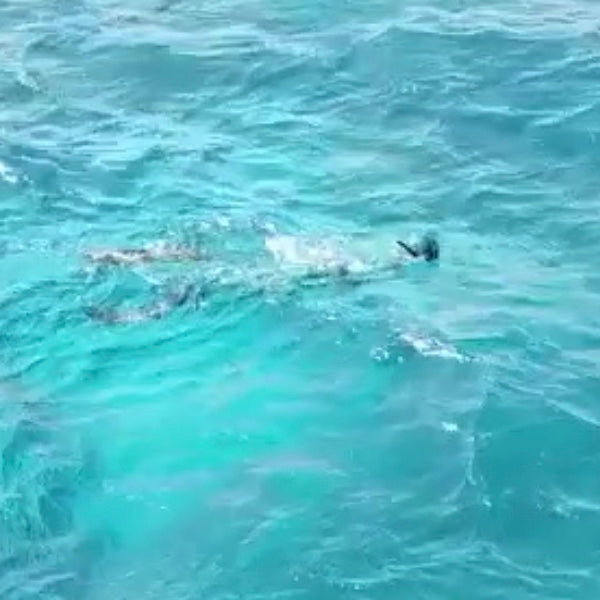
Spearfishing Hunting Techniques - Stalking Strategies
As you develop as a spearo, you will come to realize that different situations, species, and settings call for different kinds of stalking strategies in order to acheive the desired outcome of landing a big fish. There are no guarantees in spearfishing, and situations and conditions change day to day. That is why having as many tools (metaphorical and literal) in your tool belt as possible is important. Here, we're going to go through some of those tools, and when best to use them.
Spearfishing Techniques for the Bottom
Most reef species can be found on or near the bottom. This means we need to have a few strategies to allow us to find fish on the bottom without spooking them or bring them to us. There are a couple methods to bring in reef fish or get a better vantage to close the distance.
Dusting and Scratching
Dusting and Scratching are both good strategies for bringing fish in, if you have the bottom time to make it work. Many fish species are initially wary of divers, but their curiosity can win over if you're patient and still on the bottom. Dusting is the act of gently throwing sand up above your head into the water column when on the bottom. Scratching involves taking a rock from the bottom and scraping it against a piece of structure, or simply scratching at the structure with your gloved hand. The commotion of either of these activities can bring fish in to see if there is a feeding opportunity.
Hovering Above the Bottom
Some spearos almost never go straight to bottom, and instead swear up and down that hovering over it is the best method for hunting on reef-like structure. The basic concept is to dive down and level out 10-15 feet (3-5 meters) above the bottom. From there you have a great vantage point to hunt the reef. If you see a fish worth targeting, you can then dive deeper to get to that specific fish. Hovering also allows you to not dive as deep all day and conserve some energy. This strategy is particularly helpful in visibility where you cannot see the fish you are targeting from the surface, or when targeting fish that aren't known to be attracted much by scratching, dusting, or grunting.
Grunting
“Grouper Calling” is the process of making a grunting noise with your throat. It works on a similar principle to scratching the bottom. The noise mimics the sound that some grouper and other reef fish make, and brings other reef fish in to check out the noise. This works well for snapper and grouper.
Spearfishing Techniques for the Surface
Spearfishing from the surface certainly has its own challenges. When a fish approaches on the surface you frequently don’t have enough time to dive properly to get to the fish. Sometimes, the challenge isn't that the fish has come in too quickly to make a good duck dive, but that it's too far away.
“Cone of Death” - Spearfishing Technique
The “Cone of Death” strategy was developed by Jerry Guerra to increase his success on deep dives. The strategy relies on first knowing the range your speargun is effective. You start with a partial dive to identify the fish you want. If the fish can’t be within range on that dive, abort your dive and move on the surface to be ready to have that fish within range on the next dive. The "cone" part of the strategy relies on visualizing the range of your gun between the horizontal and downward range of your gun as you dive, and not getting too close to spook the fish until you're certain it's in that effective range. The process may require multiple dives. It also means you need to learn fish behavior and learn when to turn up and plane out on your dive to set yourself up for success for the shot, or when to time aborting a dive. It is described in detail by Jerry himself in this Noob Spearo Podcast Episode.
Pelagic Species
Many pelagic species tend to be constantly on the move. Targeting them is a challenge and often comes down to presenting them with food or something that looks like an opportunity to eat. That means deploying flashers or chum. It also means being ready to make a quick drop as a targeted fish moves through. Pelagic species may come back by, but sometimes they are just passing through and you have to take the opportunities as they come. That means you have to get good at “surprise dives” and quick shots on some species. The best way to be ready for a surprise dive is to always be working through your breathe-up, so that you are as close as possible to ready to do the dive.
